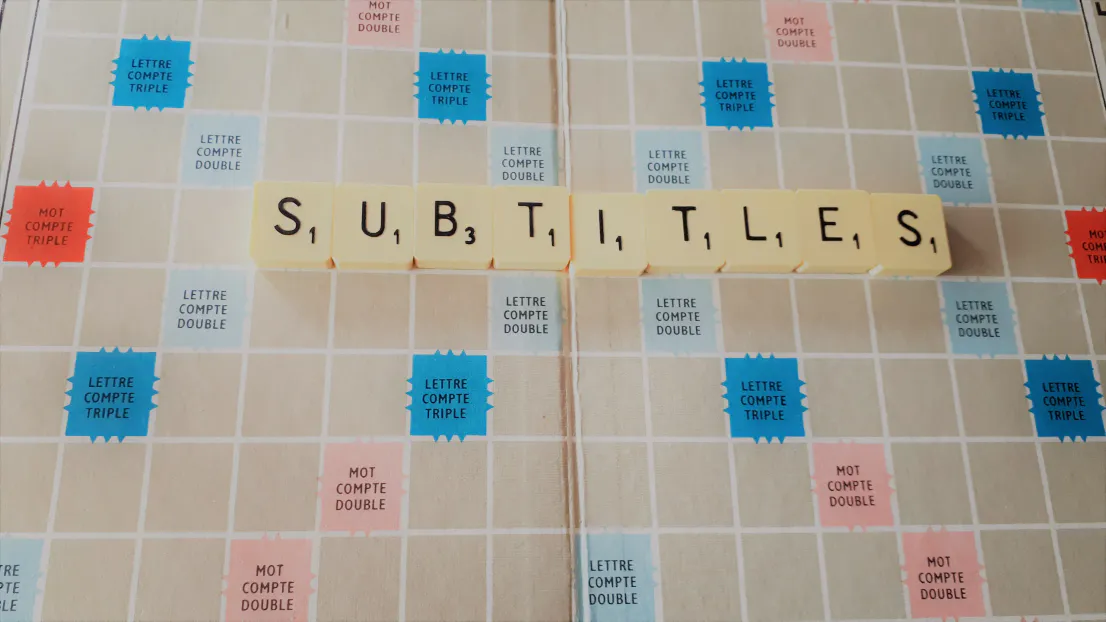Elementary Translations
Monday - Friday:
9.00 am - 5.00 pm (Paris time)
Your words. Your passion.
In English.
Video subtitles and translations and how it can work for you
03/01/2023

Video subtitling and translating is a brand-new service from Elementary Translations to help you get more out of your digital content! Read on to find out how you can benefit from it.
Have you noticed the trend?
A new video pops up in your social media or LinkedIn feed, and more often than not, it’ll have subtitles.
You may ask yourself why that is the case. After all, the presenter is speaking perfectly clearly, so why bother?
Well, let me share with you why it’s more than just a plus for so many:
- It’s a great way of having bilingual content. In today’s world, a lot more materials are available in multiple languages. By having a video available in French with English subtitles for example, you can double your reach and the potential to attract more customers.
- It’s great for the deaf and hard of hearing. After all, they’re just as interested in your content, so why force them to lip read when you can make things so much more accessible for them?
- It’s great for foreigners. Whether they are learners or have a decent level of English, it’s always nice to have subtitles to help the person if they are having difficulties in deciphering a word they didn’t quite catch.
- It’s great for those who are struggling with the speed of the presenter’s delivery. We may not realise it, but a moment’s inattention means that you may not hear a word properly, and that’s where subtitles can come in handy to bridge the gap.
Now, adding subtitles to videos, whether in the same language or as a translation, requires a bit of skill because some basic rules need to be followed to get good results.
I’m sure you’ll agree with me, there’s nothing worse than having subtitles disappear before you’ve had a chance to read them or having subtitles that are far too long. It’s a sure-fire way of having viewers simply switch off or click away from the content because they feel dizzy trying to keep up.
What’s the recipe for top-notch video subtitles?
1. A good subtitle editor tool.
There is a vast array of software available online, personally I’m a fan of Aegisub as it’s very user-friendly and it’s widely used by fansubbers around the world.
2. Time coding that’s bang on target. This is where the skills and experience of the person producing the subtitles very much come into play. It’s all about making sure that the subtitles appear the moment the speaker starts talking and, where possible, ending them at the same time, which is easier said than done! If you’ve ever noticed that the subtitles don’t exactly reflect what the person has said, then it may be because other constraints came into play, as you’ll see below.
3. Getting the reading speed right. To make the experience of watching a video enjoyable, the person needs to have sufficient time to read the subtitles and look at the video without getting dizzy. As a general rule of thumb, a maximum of 15 characters per second (CPS) makes for easy reading in English.
4. Line length and line breaks. Units of meaning need to be kept together. There should be no more than two lines per subtitle, with no more than 40 characters per line (ideally 37). Where possible, a natural pause, such as a comma or full stop, is the perfect occasion for a line break.
5. Sounds. If a door slams, a siren wails, or a gun goes off, someone who is deaf or hard of hearing may not hear that. It may be a vital part of a plotline, and that clue needs to be shared with all. By adding a simple [BANG] or [A door slams], you’re giving that extra bit of information to make watching your video that bit more exciting.
6. Quality control. Before heading on to the last step of encoding, it’s very important to watch the video with the subtitles to make sure that they display at the right time, that they do not overlap, and that there are no blanks when there should be text.
7. Encoding. To ensure the seamless publication of your video, you’ll probably want to provide your video in MP4 format. There’s a last little bit of work to transform your SRT file (also known as a SubRip Subtitle file) with all the timecodes and formatting in an MP4 file. Encoding is relatively quick, and once that’s done, it’s plain sailing for an enjoyable experience for your viewers!
Sound great! How long does it take?
Give yourself plenty of time. You’ll need at least five to ten times the duration of your video to produce captions (subtitles) for it.
In more concrete terms, if you have a video that lasts an hour, you’re looking at a minimum of five to ten hours subtitling.
Bear in mind that producing video translations is even more time-consuming. For the best results, you should have a script to guide you, but better yet, use an experienced translator like me to ensure that the text flows well and reflects what the speaker has said.
Spend your time on what you do best; let me do the legwork for you instead!
Elementary Translations
Séverine Watson EI
+33 (0)783674385
3125 Chemin du Roi
32430 Saint Georges, France
SIRET: 880 194 303 00025

